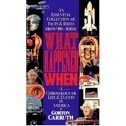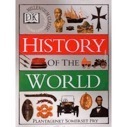A Regency Era Timeline 1822 in progress
English Historical FIction Authors
Several of the followers of The Things That Catch My Eye blog will know that I also blog over at English Historical Fiction Authors.
The EHFA has a different blog post everyday supplied by authors like myself in the field. The reason to draw your attention to the EHFA today, is that the one year anniversary of the website/blog will be this weekend and there are approximately 20 books being given away in honor of that event. Just post a comment on Saturday the 22nd, or Sunday the 23rd at the site.
Timeline
Each time I start a year, I have already compiled a list, months ago with about 6000 entered of what happened from 1788 to 1837. My first step now (It took several trials to get this down to a science) is to cut out the specific year I will work on and paste it into its own spreadsheet to work with. When I worked on the entire spreadsheet, sometimes inserting a line, with all the graphics I had begun to place, took a long time. Working on each year alone, is a lot faster.
With the year separated out, I now turn to my book sources,
The Timetables of History by Grun and Stein
Chronology of CULTURE by Paxton and Fairfield
 What Happened When by Carruth.
What Happened When by Carruth.
 , History of the World. A beautiful Dorealing Kindersley book.
, History of the World. A beautiful Dorealing Kindersley book.
I now and diligently look through each of these to find entries that I did not come across on the internet, and other printed lists. It is possible that there are places that have more listings for each year. I have not found them. And when you go to the Timelines at the Regency Assembly Press page, there you will see all the graphical references as well. Something that I did not find anywhere else.
Here is the start of 1822:
Year
Month Day
Event
1822
Jan 2
Rudolph J.E. Clausius, German physicist (thermodynamics), was born.
1822
Jan 6
Heinrich Schliemann (d.1890), German businessman and amateur archeologist, was born. He began excavating Troy in 1870 following a visit to Hissarlik in 1868.
1822
Feb 4
Free American Blacks settled Liberia, West Africa. The first group of colonists landed in Liberia and founded Monrovia, the colony’s capital city, named in honor of President James Monroe.
1822
Feb 9
The American Indian Society organized.
1822
Feb 16
Francis Galton (d.1911), English scientist, was born. He was one of the first moderns to present a carefully considered eugenics program.
1822
Feb 22
Adolf Kuszmaul, German physician (stomach pump, Kuszmaul disease), was born.
1822
Feb 23
Boston was granted a charter to incorporate as a city.
1822
Mar 9
The first patent for false teeth was requested by C. Graham of NY. [see Jun 9, 1882]
1822
Mar 16
John Pope, Union general in the American Civil War, was born.
1822
Mar 16
Rosa Bonheur, French painter and sculptor, was born.
1822
Mar 19
Boston was incorporated as a city.
1822
Mar 22
Gioacchino Rossini married Isabella Colbran in Bologna.
1822
Mar 30
Congress combined East and West Florida into the Florida Territory.
1822
Apr 3
Edward Everett Hale, American clergyman and author (Man without a Country) , was born.
1822
Apr 13
Gaetano Valeri (61), composer, died.
1822
Apr 26
Frederick Olmstead, landscape architect, was born in Connecticut. His work included Yosemite Nat’l. Park, Central Park in New York City (1858), and other city parks in Boston, Ma., Hartford, Ct., and Louisville, Ky.
1822
Apr 27
Ulysses S. Grant (d.1885), general and 18th U.S. president (1869-1877), was born in Point Pleasant [Hiram], Ohio.
1822
May 24
At Battle of Pichincha (Ecuador) General Sucre (1795-1830) won a decisive victory against Spanish forces. Shortly after the battle, Sucre and Bolivar entered the newly-liberated Quito and Sucre was named President of the Province of Quito, which formed Gran Colombia with Venezuela and Colombia.
1822
May 26
Edmond de Goncourt, writer, was born.
1822
May
Dr. Gideon Mantell published his book “The Fossils of South Downs,” based on his studies of huge teeth and bones found at the Tilgate Forest quarry.
1822
Jun 6
Alexis St. Martin, a fur trader at Fort Mackinac in the Michigan territory, was accidentally shot in the abdomen. William Beaumont, a US Army assistant surgeon, treated the wound and St. Martin survived. The stomach wound did not close and Beaumont undertook experiments in 1825 to study the digestive system.
1822
Jun 9
Charles Graham patented false teeth. [see Mar 9, 1822]
1822
Jun 14
Charles Babbage (1792-1871), a young Cambridge mathematician, announced the invention of a machine capable of performing simple arithmetic calculations in a paper to the Astronomical Society. His 1st Difference Engine could perform up to 60 error-free calculation in 5 minutes. Babbage and engineer John Clement completed the calculator portion of a new engine in 1832, but the project lost funding and remained unfinished.
1822
Jun 16
Denmark Vessey [Vesey] led a slave rebellion in South Carolina. [see Jul 2]
1822
Jun 18
Slave revolt leaders Denmark Vesey [Vessey] and Peter Poyas were arrested in SC.
1822
Jun 25
Ernst Theodor Amadeus (ETA) Hoffmann (46), German writer, judge, composer, died.
1822
Jul 2
Denmark Vesey [Vessey] (b.1767) was executed in Charleston, South Carolina, for planning a massive slave revolt.
1822
Jul 8
Percy Bysshe Shelley (b.1792), English poet, drowned while sailing in Italy at age 29.
1822
Jul 22
Gregor Johann Mendel (d.1884), Austrian botanist who developed the theory of heredity, was born.
1822
Jul 25
Gen. Agustin de Iturbide was crowned Agustin I, 1st emperor of Mexico.
1822
Jul 26
Simon Bolivar and Jose de San Martin held a secret meeting.
1822
Aug 19
Melchor Lopez Jimenez (62), composer, died.
1822
Aug 25
F. William Herschel (85), German astronomer (discovered Uranus), died.
1822
Aug 31
Fitz John Porter (d.1901), Major General (Union volunteers), was born.
1822
Sep 6
John Constable, English painter, painted his “Cloud Study, 6 September 1822.” He painted some 100 studies of the sky between 1821-1822.
1822
Sep 7
Brazil declared its independence from Portugal.
1822
Sep 9
Napoleon J K P Bonaparte, French prince and member National Convention, was born.
1822
Oct 4
Rutherford B. Hayes, the 19th president (R) of the United States, was born in Delaware, Ohio. Hayes was a major-general in the Civil War, then an Ohio congressman, then succeeded Grant as president (1877-81). Hayes won the Electoral College by a margin of one vote after his opponent won the popular vote in an election so fraught with charges of vote fraud that there were even fears of a coup. Hayes refused to seek a second term.
1822
Oct 8
The Galunggung volcano on Java sent boiling sludge into valley. The eruption left 4,011 dead. The long-inactive volcano erupted Apr 4 and blew its top on Apr 12. The Oct 8 and Oct 12 eruptions left 4,011 dead.
1822
Oct 9
George Sykes (d.1880), Major General (Union volunteers), was born.
1822
Oct 13
Antonio Canova (b.1757), Italian sculptor, died at age 64. His work included a sculpture of Napoleon’s sister Pauline, as a semi-naked Venus Victrix.
1822
Oct 15
Alfred Meissner, Austrian physician and writer, was born.
1822
Oct 20
The 1st edition of the London Sunday Times was published.
1822
Nov 2
The USRC Louisiana along with USS Peacock and the Royal Navy schooner HMS Speedwell captured five pirate vessels off Havana, Cuba.
1822
Dec 1
Franz Liszt (11) made his debut as a pianist for Isabella Colbran.
1822
Dec 4
Frances Crabbe, English feminist and founder of the Anti-Vivisection Society, was born.
1822
Dec 6
John Eberhard was born. He built the 1st large-scale pencil factory in US.
1822
Dec 12
Mexico was officially recognized as an independent nation by US.
1822
Dec 14
John Christie, English patron of music, was born. He founded the Glyndebourne Festival Opera.
1822
Dec 14
The Congress of Verona ended, ignoring the Greek war of independence.
1822
Dec 26
Dion Boucicault, Irish-US actor and playwright (Rip van Winkle), was born.
1822
Dec 27
Louis Pasteur (d.1895), French chemist and microbiologist, was born in Dole, France. One of his several monumental contributions to science and industry was pasteurization, the process of heating wine, beer and milk to kill microorganisms that cause fermentation and disease. Pasteur also developed important vaccines and his work on molecular asymmetry led to the science of stereochemistry. He was the first to vaccinate animals for anthrax and chicken cholera, and in 1885 he proved that his rabies vaccine could be used successfully on humans when he saved the life of a 9-year-old boy who had been bitten by a rabid dog. The Pasteur Institute was formed in Paris in 1888 for research on rabies. Pasteur ran the institute until his death in 1895.
1822
Dec 28
William Booth Taliaferro (d.1898), Brig Gen (Confederate Army), was born.
1822
A New York physician, John Stearns, writes on the use of ergot to induce labor and save the doctor’s time. Even though he’s been told by an immigrant German midwife there are no ill effects from its use, it is found that it produces an incessant action leaving no time to turn a child in the uterus or birth canal should problems develop. He cautions its usage only after the child is positioned for delivery. A fungus, it comes into wide use and by 1900 will be routinely employed.
1822
An Italian ballerina, Marie Taglione will make her debut at the age of 8 in Vienna and within a few years will be setting the standard to which all other ballerinas are judged. By the time she retires in 1847, she will become world famous not just for her dancing, but for her choreography as well.
1822
Brazil declares its independence from Portugal.
1822
Ecuador and Colombia are liberated as well.
1822
In West Africa, Liberia is founded as a colony for freed American slaves.
1822
New York City’s population is now 124,000, where a family of 14 can live comfortably on $3,000/year.
1822
Reformer Francis Place distributes his pamphlet, To the Married of Both Sexes of the Working People throughout London, recommending contraception in the forms of coitus interruptus or by the insertion of a soft wool or cotton sponge as large as a green walnut or small apple, tied by a bobbin or penny ribbon.
1822
The Congress of Verona breaks down after Britain’s refusal to intercede in Spain; this action causes the end of the Congress System.
1822
A member of Portugal’s royal family is in power in Brazil. He has lifted duties paid on the importation of books, abolished censorship and ordered the teaching of law at the universities of São Paula and Olinda. His rule is being challenged from Portugal, and from his royal palace he declares “Independence or death!” At the age of 24 he his proclaimed Emperor of Brazil: Pedro I.
1822
Officials of the American Colonization society have purchased a strip of land they call Christopolis, at Cape Mesurado on the Atlantic Coast in western Africa. Eighty-six freed blacks have arrived.
1822
In Vienna the accordion is invented.
1822
In Britain, fewer crimes are capital offenses.
1822
The Ottoman Turks respond to rebellion on the island of Chios by slaughtering five-sixths of the islands 120,000 inhabitants.
1822
Charles Willson Peale painted his “Self Portrait.”
1822
Pierre-Paul Prud’hon (1758-1823) painted “A Grief-Stricken Family.” It was painted shortly after his student and mistress, Constance Mayer, slit her throat.
1822
Utagawa Kunisada, Japanese artist, painted “The Popular Type.”
1822
William West painted a portrait of the poet Lord Byron.
1822
J.F. Champollion published his work on deciphering the Rosetta Stone.
1822
Thomas De Quincey wrote his “Confessions of an English Opium Eater.” He used the word tranquilizer to describe the effect of the drug.
1822
The Queen of the Angels Roman Catholic Church in Los Angeles was built.
1822
Twenty years after the war of 1812 the US government finished paying off the national debt entirely.
1822
The Superintendent of Mails in Washington, D.C., complained about the need to hire 16 extra mailmen because of the volume of Christmas cards and holiday mail. The tradition of Christmas cards had become so popular it became a burden for the United States Postal System, which petitioned Congress to limit the exchange of cards by post. But the cards kept coming and the postal burden worsened.
1822
California became part of Mexico.
1822
Monterey had begun the century as the Spanish capital of Alta California but in this year became the Mexican capital of Alta California.
1822
Christian Buschmann (17), organ and clavier tuner, constructed the first primitive accordion. It wasn’t until the 1840s that the “magdaburgerspelen” came into fashion, the instrument generally believed to be the forerunner to the durspel of our time.
1822
Mary Mantell, a fossil collector in Sussex, England, discovered a handful of teeth that her husband, Dr. Gideon Mantell, recognized as similar to those of the iguana lizard of South America. This was recorded as one of the first dinosaurs to be discovered.
1822
The parasitic plant Rafflesia was discovered in the lowland forests of Southeast Asia. It steals nutrition from other plants and periodically creates a monstrous, red-brown flower with the perfume of rotten flesh.
1822
Albanian leader Ali Pasha of Tepelena was assassinated by Ottoman agents for promoting autonomy.
1822
In London a bronze Achilles cast from cannons from the Napoleonic wars was unveiled at the residence of the Duke of Wellington. A strategic fig leaf was soon added.
1822
Gebruder Heubach (Heubach Brothers) began a porcelain manufacturing operation in Lichte, Thuringia, Germany. The firm became known for manufacturing doll heads and in 2005 was still in operation as Lichte Porcelain.
1822
There was a massacre of Greeks on the island of Chios. The event was later depicted in a painting by Delacroix.
1822
In Mexico the mission of St. Gertrude the Great on the Baha Peninsula was closed as the local population diminished.
1822
In New Zealand Welshman John Grono named Milford Sound, South Island, after his home, Milford Haven. It was later named a UN protected World Heritage Site.
1822-1825
Luis Antonio Arguello, son of Jose Dario, was the first native-born governor of Alta California.
1822-1831
Pedro I ruled Brazil.
1822-1884
Gregor Mendel, Austrian botanist monk, established basic principles of heredity.
1822-1888
Matthew Arnold, English poet and critic. His books included “Culture and Anarchy.” His best known poem is Dover Beach.” In 1999 Ian Hamilton wrote “A Gift Imprisoned: The Poetic Life of Matthew Arnold.”
1822-1889
The period of the Brazilian monarchy.
1822-1890
Cesar Auguste Franck, French composer born in Belgium. His work included “Piece Heroique.”
1822-1895
Louis Pasteur, French chemist and bacteriologist, was born on Dec. 27.
1822-1900
Edward John Phelps, American lawyer and diplomat: “The man who makes no mistakes does not usually make anything.”
1822-1904
Some 23,000 immigrants, mostly from the US, arrived in Liberia.






